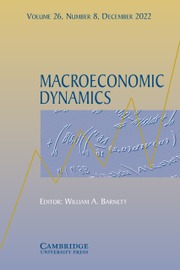No CrossRef data available.
Article contents
No road with roses in developing countries: gender diversification in firm leadership and total factor productivity
Published online by Cambridge University Press: 27 January 2025
Abstract
The paper investigates the gender-driven disparities in total factor productivity (TFP) between women-owned enterprises (WOEs) and male-owned enterprises (MOEs) across 30 developing countries. Utilizing firm-level data from the World Bank Enterprise Surveys, the study addresses biases in previous gender literature by employing a semi-parametric technique to more accurately measure TFP. The results reveal a significant TFP gap, with WOEs being 5.5% to 6.7% less productive than MOEs, even after controlling for key firm characteristics like age, innovation, human capital, and ownership status. The study attributes this productivity disparity primarily to financial obstacles faced by WOEs, which hinder their ability to innovate and capitalize on opportunities. The lack of access to credit leads to a misallocation of capital, excluding equally efficient women entrepreneurs from financial resources that could stimulate productivity. Contrary to some assumptions, the study finds no evidence that WOEs underperform in sectors with high financial dependence, suggesting that WOEs are not inherently inefficient in their use of capital. Our findings provide causal evidence as we control for selectivity bias in the TFP-WOEs nexus by identifying exogenously the factors that affect financial constraints and innovation.
Information
- Type
- Articles
- Information
- Copyright
- © The Author(s), 2025. Published by Cambridge University Press

